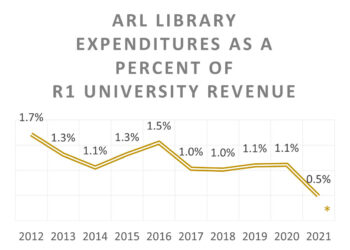
Consolidation among publishers has been a trend for more than 30 years. Mergers may be gargantuan, such as the announcement last fall of Random House and Penguin, or they may be very small. Mergers and acquisitions have taken place across all segments of our industry, from trade publishers, to society publishers, press initiatives, and even university presses. The list of merged organizations and partnerships is too long to even begin to list here. What happens less frequently is when an association merges with another association. This week, the Association of American Publishers and the Association of Educational Publishers announced news that AEP would merge with AAP’s School Division. As noted in their press release, all of the existing programs of both groups would be maintained.
The rationale for a merger between non-profits is often the same as mergers between other for-profit businesses — cost savings, synergistic growth opportunities, or a failing organization looking for a lifeline. Regardless of the internal reason, the public face of a merger is always crafted to be a pleasant one. In describing the rationale for the new relationship, AEP stated on its webpage:
AEP and the School Division of AAP already had a strong working relationship that grew out of a number of successful collaborations. By combining forces and complementing each other’s strengths, we can do even more to keep professionals across the industry informed and well equipped to navigate a future full of change and opportunity.
With the very large caveats that I haven’t spoken to anyone at AEP about its financial situation and that it’s often difficult to tease out the full story from IRS filings, it appears that financial turbulence played a role in the decision to merge.
Looking at the IRS 990 forms for AEP available on Guidestar, it seems that AEP has gone through a particularly difficult several years financially. Over the period from 2008 to 2010, AEP sustained a series of net losses totaling ($365,000), and with only a modest $7,000 surplus in 2011, AEP stood at having nearly $820,000 in liabilities against only $313,000 in assets, or more than half a million dollars of net liabilities on its balance sheet. I can’t say what happened in 2012, but this is a big hole for any organization to climb out of.
While membership appears to have remained steady at 20 members over the past five year, the program income seems to have fluctuated significantly. It dropped more than $375,000 from 2009 to 2011. There was an infusion of cash in 2008 (from what source and for what purpose is unclear), which helped to sustain the organization during that time.
Despite the stead membership level, dues income and contributions have grown by 50% during the period from 2007 to 2011 (the latest data available). Unfortnuately, this is a double-edged sword for a membership organization, in that if membership isn’t growing, than the only source of more income is raising member’s dues, which is simply not sustainable. While it may seem an easy source of additional income, raising dues is always a difficult decision because it eventually will erode the membership base. Members, whether individual or organizational, will start to question the value of an organization that is regularly asking for 10%, 15% or even 25% more from its participants. In the case of AEP, with only 20 members, there isn’t much room for losses. It is possible that the Board of AEP, comprised of its 20 members, didn’t want to face another round of significant dues increases to sustain the organization.
While financial management may have played a role in this particular decision, we should think outside the balance sheet. Within the space of non-profits, there is potentially another, more important, reason for mergers: achieving a mission. Unlike a commercial entity, serving a mission is the raison d’etre for a non-profit, although sometimes business management often clouds the vision of the leadership. Sometimes the struggle to maintain and grow the organization blinds the leadership in the ways of how best to serve that mission. Few other things focus attention the way that finances do, but outside of the moment of crisis, how often does leadership seize on the opportunity to consider the best path forward to achieve the larger community goals, not simply the internal organization’s goals? While they should be, the two are not always the same.
About 18 months ago, Brian O’Leary, an industry consultant, made a prescient call for all of us to reassess how we engage in the community. During the closing keynote address at the Books In Browsers meeting in 2011, one of the things that O’Leary called for was rethinking the role of associations should play in the community in pursuit of their respective missions. There is a lot that association leaderships can do to increase awareness of overlapping initiatives, achieve tighter integration, and even eliminate some of the competition that exists among organizations with notionally the same or similar goals. The outcome of such a movement might be more partnerships, more joint initiatives, and even mergers among organizations serving the publishing community.
For the many association executives or board members involved in scholarly publishing, we should be asking ourselves:
- Are we serving our community in the most efficient manner?
- Could there be ways in which we are inhibiting advancement of the broader community by defending one’s own organizational turf?
- If there aren’t enough resources to accomplish a particular goal might partnerships not be a better way to proceed?
Hopefully, this was part of the thinking that went into the decision to merge AEP and AAP’s School Division. If so, it will be a small step forward to a more efficient community.



